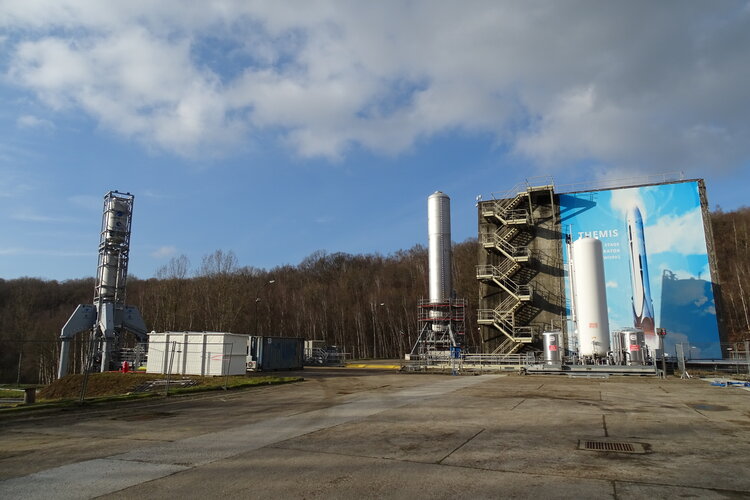
Copernical Team
Momentus updates on Transporter-9 with triumphs and challenges in satellite deployment
 Momentus Inc. (NASDAQ: MNTS) has provided an update on its recent mission, which was part of the SpaceX Transporter-9 launch on November 11. In this mission, Momentus utilized a third-party deployer system to place payloads into orbit, a common practice in the space industry. This approach allows for multiple satellites to be deployed using a single launch vehicle, thereby optimizing resources a
Momentus Inc. (NASDAQ: MNTS) has provided an update on its recent mission, which was part of the SpaceX Transporter-9 launch on November 11. In this mission, Momentus utilized a third-party deployer system to place payloads into orbit, a common practice in the space industry. This approach allows for multiple satellites to be deployed using a single launch vehicle, thereby optimizing resources a Digging Deeper to Find Life on Ocean Worlds
 In February 2023, leading researchers convened at a NASA-sponsored workshop at the California Institute of Technology to discuss a transformative mission concept: deploying a cryobot to penetrate the icy crusts of Europa and Enceladus in the search for extraterrestrial life. This ambitious initiative is part of NASA's ongoing efforts to explore the potential habitability of these distant ocean w
In February 2023, leading researchers convened at a NASA-sponsored workshop at the California Institute of Technology to discuss a transformative mission concept: deploying a cryobot to penetrate the icy crusts of Europa and Enceladus in the search for extraterrestrial life. This ambitious initiative is part of NASA's ongoing efforts to explore the potential habitability of these distant ocean w China's sea-based rocketry expands with Smart Dragon 3's success
 In a historic event that marked a significant milestone in space exploration, the South China Sea became the backdrop for its very first space launch mission. The early morning of Wednesday witnessed the awe-inspiring spectacle of a Smart Dragon 3 carrier rocket lifting off the coast of Yangjiang in Guangdong province.
The clock read 3:24 am as the rocket, a creation of the China Academy o
In a historic event that marked a significant milestone in space exploration, the South China Sea became the backdrop for its very first space launch mission. The early morning of Wednesday witnessed the awe-inspiring spectacle of a Smart Dragon 3 carrier rocket lifting off the coast of Yangjiang in Guangdong province.
The clock read 3:24 am as the rocket, a creation of the China Academy o Iran sends biological capsule into space in step toward human launch
 Iran took a step closer to sending humans into space on Wednesday as its space agency said it successfully launched a biological capsule into space with animals on board.
Officials said the capsule was sent 80 miles into space using an Iranian-built Salman rocket meant to test its launch, recovery and speed control system technologies, along with the capsule's impact shields, aerodynami
Iran took a step closer to sending humans into space on Wednesday as its space agency said it successfully launched a biological capsule into space with animals on board.
Officials said the capsule was sent 80 miles into space using an Iranian-built Salman rocket meant to test its launch, recovery and speed control system technologies, along with the capsule's impact shields, aerodynami LunA-10 Initiative: Charting a New Course for Commercial Lunar Operations
 In a significant move towards fostering a robust lunar economy, DARPA has announced the selection of 14 companies for the 10-Year Lunar Architecture (LunA-10) Capability Study. This groundbreaking initiative is set to redefine the approach to lunar infrastructure, transitioning from isolated, self-sufficient systems to an integrated, commercially viable framework.
Dr. Michael "Orbit" Nayak
In a significant move towards fostering a robust lunar economy, DARPA has announced the selection of 14 companies for the 10-Year Lunar Architecture (LunA-10) Capability Study. This groundbreaking initiative is set to redefine the approach to lunar infrastructure, transitioning from isolated, self-sufficient systems to an integrated, commercially viable framework.
Dr. Michael "Orbit" Nayak Galileo Second Generation satellites take shape

To make the future of Galileo a reality, ESA and European industry are hard at work developing ultra-precise atomic clocks, system testbeds, ground mission and ground control segments and, of course, the satellites. Airbus Defence and Space, who is building six of the Galileo Second Generation constellation satellites, presented their first flight model structure to the programme’s stakeholders last week.
Understanding climate tipping points

As the planet warms, many parts of the Earth system are undergoing large-scale changes. Ice sheets are shrinking, sea levels are rising and coral reefs are dying off.
While climate records are being continuously broken, the cumulative impact of these changes could also cause fundamental parts of the Earth system to change dramatically. These ‘tipping points’ of climate change are critical thresholds in that, if exceeded, can lead to irreversible consequences.
Tracking human emissions from space
The Copernicus Anthropogenic Carbon Dioxide Monitoring (CO2M) mission will be the first satellite mission to measure how much carbon dioxide is released into the atmosphere through human activity.
CO2M isn't just a mission; it's a crucial step in our commitment to understanding and mitigating climate change. It will offer unprecedented precision in monitoring carbon dioxide emissions from the combustion of fossil fuel at national and regional scales.
Its data will provide the EU with a unique and independent source of information to assess the effectiveness of policy measures and to track their impact towards decarbonising Europe ahead of the
Themis ground and flight models
 Image:
Themis ground and flight models
Image:
Themis ground and flight models All-in-one YPSat, Ariane 6 bound
 Image:
All-in-one YPSat, Ariane 6 bound
Image:
All-in-one YPSat, Ariane 6 bound 
